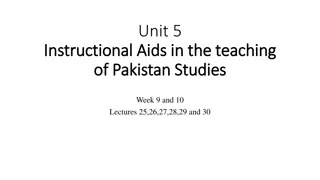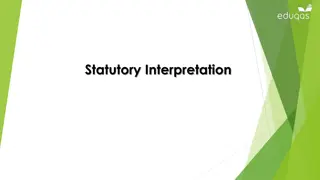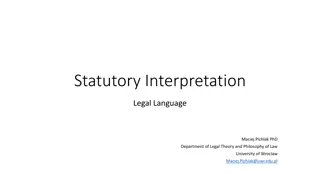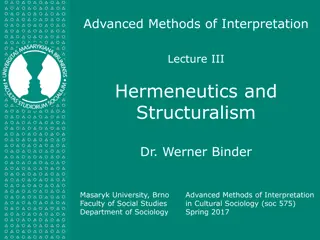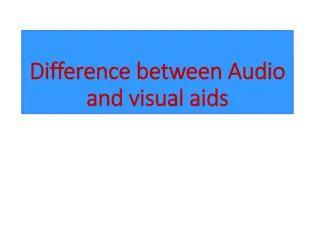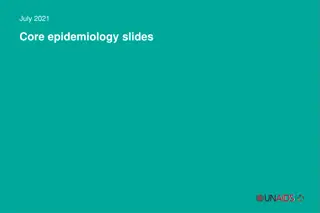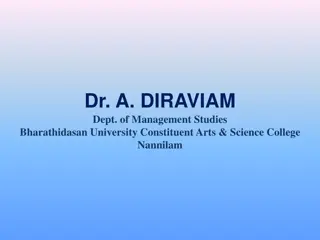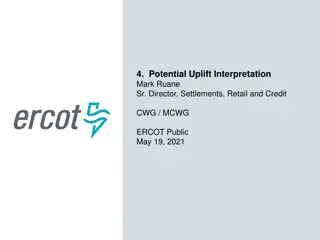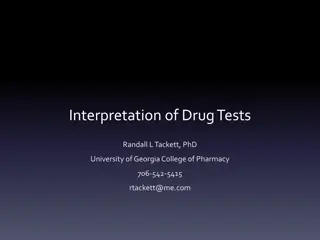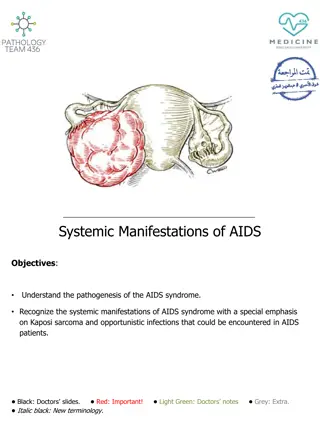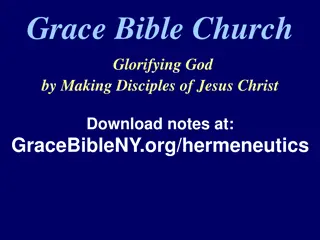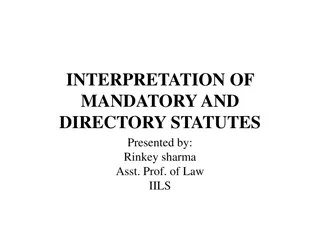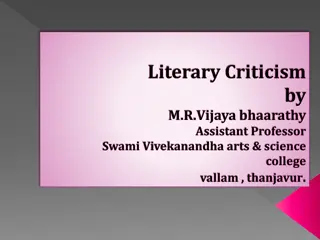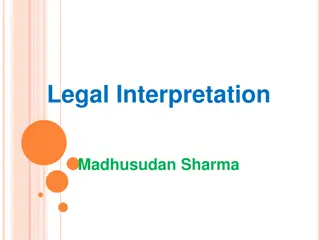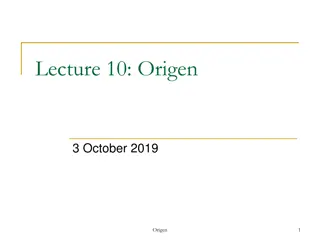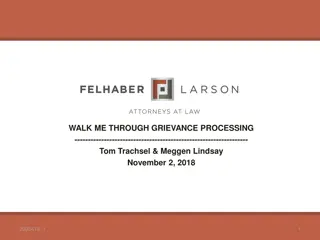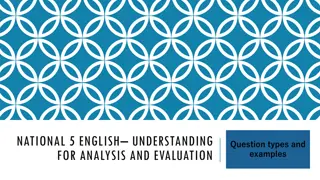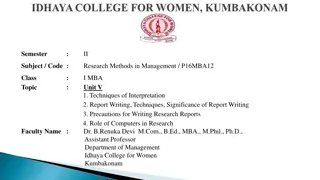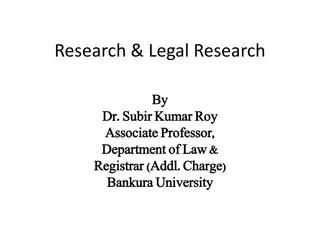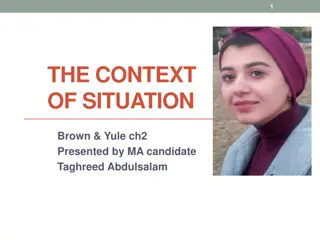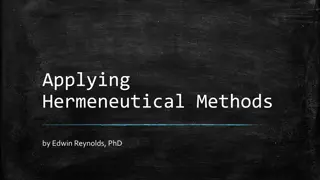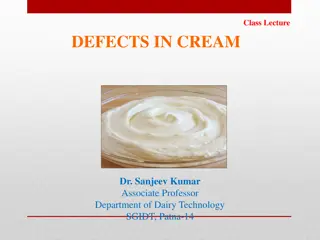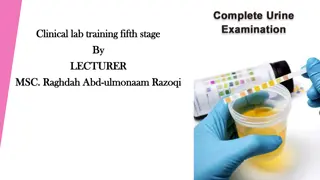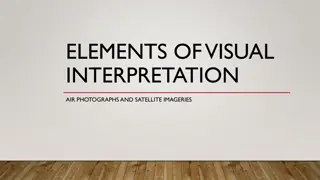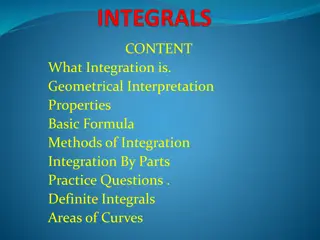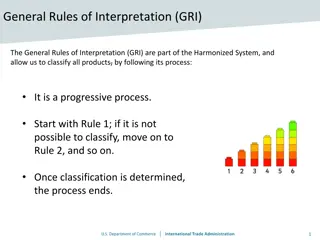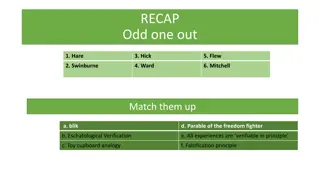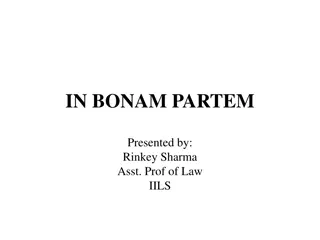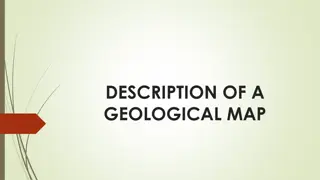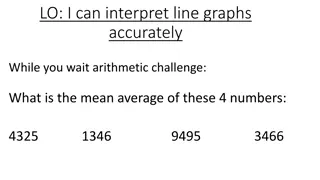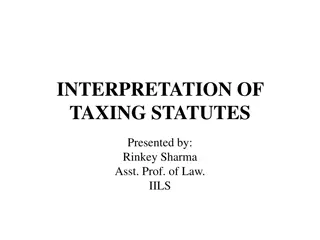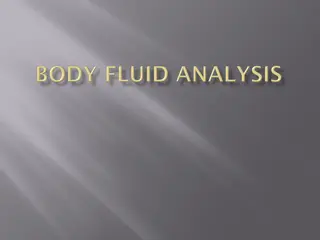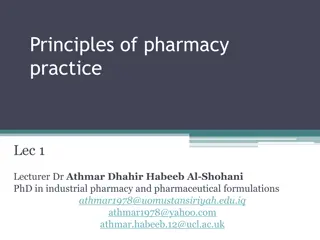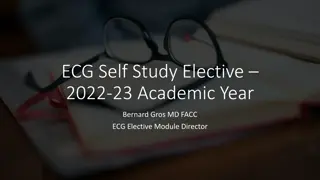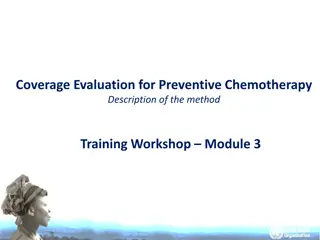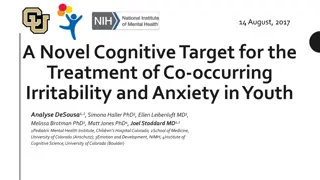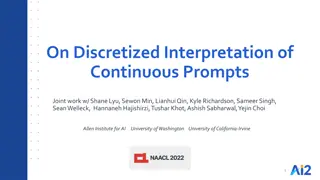Aids to Interpretation: Understanding the Purpose and Types
Interpretation of statutes involves uncovering legislative intent. Internal aids (such as titles and preambles) and external aids help judges apply statutes accurately. Key factors include short and long titles, preamble statements, and substance over form. Case examples illustrate how titles can shed light on legislative scope and purpose. The preamble gives insight into the objective of an Act. Language about interpreting statutes is detailed and informative, emphasizing the importance of understanding legislative intent for proper application.
Download Presentation

Please find below an Image/Link to download the presentation.
The content on the website is provided AS IS for your information and personal use only. It may not be sold, licensed, or shared on other websites without obtaining consent from the author. Download presentation by click this link. If you encounter any issues during the download, it is possible that the publisher has removed the file from their server.
E N D
Presentation Transcript
Aids to Interpretation Dr. J.M. Mallikarjuanaiah
Introduction The purpose of interpretation is to find out the intention of the legislature.. The aids to interpretation help a judge find out the same. These also help in deriving proper context in which a statute is to be applied. Two kinds of aids: Internal or intrinsic: those within statute. External or extrinsic: those outside of statue.
Internal Aids Title Statutes usually have two titles: the short title and the long title. Former is merely a short form of the full statute used for the sake of brevity. The latter along with preamble states out the objective and purposes of the statute. A statute, when referred to, is always known by its short title. A short title has no interpretive value.
It is permissible to use the long or full title of an Act to throw light on a doubtful meaning. Amarendra Kumar Mohapatra & Ors. v. State of Orissa & Ors. (2014) : The title of a statute is no doubt an important part of an enactment and can be referred to for determining the general scope of the legislation. But the true nature of any such enactment has always to be determined not on the basis of the given to it but on the basis of its substance.
Poppatlal Shah v. State Of Madras (1952) The assessee company was headquartered at Madras, having business of oils, kirana, etc. They purchased materials from local merchants and then send it to Calcutta for sale. Agreements with buyers were entered at Madras but sale was completed at Calcutta. They were asked to pay tax under Madras Sales Tax Act, 1939 because their profit accrued at Madras and also it was the place of contract . Appeal was allowed. It was observed inter-alia, after giving weight to the title of the Act- that the object of the Act is to impose taxes on sales that take place within the province.
Preamble It is a prefatory statement following the title and preceding the enacting clause. Expresses the scope, object and purpose of the Act more elaborately than the long title. It is not considered to be a part of enactment. However, Preamble of the Constitution has been declared to be a part of Constitution. While applying interpretive rules, Preamble affords a good clue for discovering what that object was. It is a key to open the mind of the legislature but cannot be used to control or qualify precise and unambiguous language of the statute.
Arnit Das V. State of Bihar (2000) The preamble suggests what the Act was intended to deal with. If the language used by parliament is ambiguous the court is permitted to look into the preamble for construing the provisions of an Act. The Preamble is a key to unlock the legislative intent. If the words employed in an enactment may spell a doubt as to their meaning it would be useful to so interpret the enactment as to harmonise it with the object which the legislature had in its view."
West Bengal vs. Anwar Ali Sankar (1952) It was contended that Sec.5 of the West Bengal Special Courts Act, 1950, was unconstitutional and void as it contravened Art. 14 of the constitution. That section provided that a special court shall try such offences or class of offences, or cases or classes of cases, as the state Government may direct. It was contended on behalf of the state that the preamble should be read as part of the section, (The Preamble read, 'whereas it is expedient to provide for the speedier trial of certain offences') and that the proper interpretation would be only those cases and offences which in the opinion of the State Government required speedier trial could be assigned to the special court .
Held- The express provision of an enactment, if it is clear and unambiguous, cannot be curtailed or extended with the aid of the preamble to the Act. It is only when the object or meaning of the enactment is not clear that recourse can be had to the preamble to explain it. In this case, the language of Sec. 5(1) is perfectly clear and free from any ambiguity. It vests an unrestricted discretion in the state Government to direct any cases to be tried by the special court.
Preamble cannot limit the operation of a provision. In Motipur Zamindari Co. v. St. of Bihar (1962) the assessee was asked to pay taxes for 1951-52 and 1952-53 under Bihar Sales Tax as it fell under category of dealer under section 2 of the Act. The Act was amended in 1950 and the Preamble to amending Act stated it amends the existing act and lays down rules of sales tax under the Act for the financial year beginning on April 1st1950. Assessee relied on the preamble to not pay taxes among other things. Court rejected the appeal.
Preamble of the Constitution In re Berubari (1960) the Apex Court held that preamble is not part of constitution and according to it, it is not a source of substantive power. But this view was rejected in Kesvananda Bharti v. St. of Kerala1973 C. J. Sikri observed it seems to me that the preamble of our constitution is of extreme importance and the constitution should be read and interpreted in the light of the grand and noble vision expressed in the constitution. The majority judgment strongly relied upon the preamble in concluding the basic structure doctrine.
Headings It is a settled view that the Headings or Titles prefixed to sections or group of sections perused to construe enactments. The headings prefixed to a section or sets of sections in some modern statutes are regarded as preamble to those sections. Where the language of the section of an Act is plain, it is not necessary to have recourse to the general heading. The heading cannot cut down the express meanings of the words.
Union of India V. Raman Iron Foundary(1974) heading cannot control the interpretation of a clause if its meaning is otherwise plain and unambiguous, but it can certainly be referred to as indicating the general drift of the clause and affording a key to a better understanding of its meaning. Frick India Ltd. v. Union of India (1990) Only in the case of ambiguity or doubt the heading or the sub-heading may be referred to as an aid for construing the provision but even in such a case aid could not be used for cutting down the wide application of the clear words used in the provision
Bhinka v. Charan Singh (1959) S. 180 of UP Tenancy Act- ejectment of a person who possessed a land otherwise than in accordance with the provisions of law . The appellants were in possession of the disputed lands and magistrate under s 145 CrPC, declared that they were entitled to be in possession thereof until evicted therefrom in due course of law. The question before Supreme Court arose whether appellants can be ejected without having title but a declared possession.
Supreme Court answered in affirmative. The court construed possession in accordance with the provisions of law as possession with title They came to this conclusion by looking at the heading of the section which read ejectment of a person occupying land without title N.C. Dhondial v. UOI (2004)- Matters not subject to jurisdiction of commission was used to conclude that period of one year to enquire into a matter under section took away jurisdiction of the Comission.
Marginal Notes Marginal notes of the sections are not to be referred to for the purpose of construction generally Unless they have been inserted with the assent of the legislature. Marginal notes under Indian Constitution forms part of it. In case of ambiguity, the marginal note may be looked into as an aid to construction but it cannot limit the meaning of enacted clauses.
Balraj Kunwar v. Jagatpal Singh (1926) The marginal notes to the sections of an enactment cannot be Referred to for the purpose of construing the act. There is no justification for restricting the contents of a section by its marginal notes. They are not part of the act. A marginal note is merely an abstract of the clause intended to catch the eye.
State of Bombay V. Bombay Education Society It was contended that Art-29(2) did not confer any fundamental right on all citizens generally but guaranteed the rights of citizens of minority groups Reference was made to the marginal note to Art.29 which states : Protection of interests of minorities . This contention was rejected by the Supreme Court and it was held that Article 29(2) applies to all citizens.
Punctuation a mark, such as a full stop, comma, or question mark, used in writing to separate sentences and their elements and to clarify meaning. No punctuation marks were used in England before 1850 in manuscript copy of any Act which received legal assent. According to traditional view punctuations cannot be used to construe the Act. Like the previous aids they can also be used only when meaning is ambiguous. They are always subordinate to the requirement of the context.
Maharaja of Burdwan V. Murtunjoy Singh (1887), It was observed by privy council that it was an error to rely on punctuation in construing the Act of Legislature. Ashwini Kumar V. Arbinda Bose (1952) When a statute is carefully punctuated and there is doubt about its meaning, weight should undoubtedly be given to the punctuation. Punctuation may have its uses in some cases but it cannot certainly be regarded as a controlling element and cannot be allowed to control the plain meaning of
Mohd. Shabbir v. State of Maharashtra (1979) Section 27 of the Drugs and cosmetics Act, 1940 came up for construction. By this section whoever manufactures for sale, sells, stocks or exhibits for sale or distributes a drug without a licence, is liable for punishment. In holding that mere stocking is not an offence within the section, the Supreme Court pointed out the presence of comma after manufactures for sale and 'sells' and absence of any comma after 'stocks'. It was, therefore, held that only stocking for sale could amount to offence and not mere stocking.
Dr. M. K. Salpekar v. Sunil KumarShamsunder Chaudhari (1979) The court construed clause 13 (3) v of the C.P. and Berar Letting of Houses and Rent Control Order. This provision permits ejectment of a tenant on the ground that "the tenant has secured alternative accommodation, or has left the area for a continuous period of four months and does not reasonably need the house." In holding that the requirement that the tenant does not reasonably need the house has no application when he has secured alternative accommodation the court referred and relied upon the punctuation comma after the words alternative accommodation.
Illustrations Illustrations appended to a section from part of the statute though forming no part of the section. They are of relevance and value in the construction of the text of the section. However an illustration cannot go beyond the section. If the text is clear and the illustration beyond it, the illustration can t extend or limit the scope of the text. It can be rejected on the ground of repugnancy to the section itself. Shambhu Nath Mehra v. State of Ajmer (1956) an Illustration does not exhaust the full content of the section which it illustrates but it can neither curtail nor expand its ambit
Section11, IEA When facts not otherwise relevant become relevant Facts not otherwise relevant are relevant- (1) If they are inconsistent with any fact is issue or relevant fact; (2) If by themselves or in connection with other facts they make the existence or non-existence of any fact in issue or relevant fact highly probable or improbable Illustration (a) The question is, whether A committed a crime at Calcutta on a certain day. The fact that, on that day, A was at Lahore is relevant .
Interpretation Clause AKA Definition section. It provides an important aid to gather intention of the legislature. Legislature often gives definitions of certain words to remove ambiguity and extend the ordinary meaning of the words or phrases in question. Definition is a statement that explains the meaning, nature and content of something one is defining in a precise and articulate manner.
Khanna J., in Indira Nehru Gandhi V. Raj Narain(1975) : A definition clause in a statute is a legislative device with a view to avoid making different provisions of the statute cumbersome. Where a the effect is that where ever the word defined is used in a provision to which that definition is applicable, the definition of the word gets substituted. Where, however, the definition is preceded by the words "unless the context otherwise requires", the connotation is that normally it is the definition given in the section which should be applied and given effect to. This normal rule may, however, be departed from, if there be something in the context to show that the definition should not be applied.
Restrictive and Extensive Definitions Different words or phrases are used to furnish definitions. These do not take away the ordinary and natural meaning of the words. They either extend the meaning or give meaning to ambiguous words. Means - exhaustive. Includes - extends the ordinary meaning. Means and includes - exhaustive. denotes - same significance as includes . Deemed to be - creates a legal fiction. that is to say - illustrative of definition. Many definitions start with unless the context requires otherwise .
P. Kasilingam v. P.S.G. College of Technology (1995) The use of the word means indicates that definition is a hard- and-fast definition, and no other meaning can be assigned to the expression than is put down in definition. The word includes when used, enlarges the meaning of the expression defined so as to comprehend not only such things as they signify according to their natural import but also those things which the clause declares that they shall include. The words means and includes , on the other hand, indicate an exhaustive explanation of the meaning which, for the purposes of the Act, must invariably be attached to these words or expressions .
Carter v. Bradbeer (1975) Section 201 (1) of Licensing Act,1964 defines bar to include a place which is exclusively and mainly used for the sale and consumption of intoxicating liquor. The court while referring to this definition held that the word include showed that the definition did not exclude what would ordinarily and common parlance be spoken of bar, and therefore counters used for serving liquor were held to be bar.
South Gujarat Tiles Manufacturers Assn. v. State of Gujarat (1976) Now it is true that includes is generally used as a word of extension, but the meaning of a word or phrase is extended when it is said to include things that would not properly fall within its ordinary connotation. Sometimes, however, the context may suggest that word includes may have been designed to mean means . Karnataka Power Transmission Corpn. v. Ashok Iron Works (P.) Ltd., (2009) The setting, context and object of an enactment may provide sufficient guidance for interpretation of the word includes for the purposes of such enactment.
Vanguard Fire & General Insurance Co. Ltd. v. Fraser & Ross (1960) Whether the definition of the word insurer included a person intending to carry on a business or a person who has ceased to carry on a business. It was contended that the definition started with the words insurer means and, therefore, is exhaustive. The Supreme Court, repelling that contention held, that statutory definitions or abbreviations must be read subject to the qualification variously expressed in the definition clauses which created them and it may be that even where the definition is exhaustive inasmuch as the word defined is said to mean a certain thing, it is possible for the word to have somewhat different meaning in different sections of the Act depending upon the subject or the context.
Borrowed definitions Sometimes definition section may borrow definitions from an earlier Act The definitions so borrowed may not necessarily be in the definition section but in some other provision of the earlier Act. Public nuisance. In absence of such a pari materia definitions from GCA can be looked upon.
Ambiguous definitions Normally definition is intended by legislature to be precise. However, when a definition is ambiguous it requires interpretation for the want of clarity. In order to understand in complete the meaning of the word, it should not be read in isolation and should require taking help of other provisions or the definition for the same word provided in different statutes. The context and general purpose may also be looked upon.
Lord Rankin in ILM Cadija Umma v. S. Don Manis Appu (1939). A phrase having been introduced and then defined, the definition prima facie must entirely determine the application of the phrase, but the definition must itself be interpreted before it is applied, and interpreted, in case of doubt in a sense appropriate to the phrase defined and to the general purpose of the enactment.
Pradyat Kumar v Chief Justice, Calcutta (1956) The apellant was dismissed from his services by the respondent and on of the contentions raised was he had no power under law to do so. It was held that Article 229 (1) also contains power of dismissal. The court took help of Section 16(1) of GCA which clearly provides that power of appointment includes the power to suspend or dismiss .
Hariprasad Shivshankar v. A.D. Diwakar (1957) A railway company served notice of retrenchment on its employees because the GOI was taking over the Railways, which results into closure of company. The definition of retrenchment under Industrial Disputes Act was in question. As per Section 2 (oo) it means the termination by the employer of the service of a workman for any reason whatsoever, otherwise than as a punishment inflicted by way of disciplinary action Supreme Court held in favour of the company.
The word industry under IDA has been interpreted to mean many things to come within its purview. S. 2 (j) defines industry as as any business, trade, undertaking, manufacture, or calling of employers and includes any calling, service, employment, handicraft or industrial occupation or avocation of workmen. Triple test has been laid out by SC in Bangalore Water Supply v A Rajappa (1978) Systematic and organized activity With the cooperation between Employers and employees For the production and distribution of good and services whether or not capital has been invested for this activity.
State of Bombay V. Hospital Mazdoor Sabha The question was whether the JJ group of Hospitals was an 'industry under IDA. The Supreme Court held in affirmative. Hospital includes a systematic activity habitually undertaken to render service to community at large, hence industry. It does not matter whether it is for profit or not. It also does not make any difference if it is run by Government or a private person.
Proviso It is a qualification of the preceding enactment which is expressed in terms too general to be quite accurate. A proviso is added to an enactment to qualify or create an exception to what is in the enactment and ordinarily, a proviso is not interpreted as stating a general rule. A proviso does not travel beyond the provision to which it is a proviso.
Where the proviso is directly repugnant to a section, the proviso shall stand and be held a repeal of the section as the proviso speaks the later intention of the makers. The proviso is subordinate to the main section. A proviso does not enlarge an enactment except for compelling reasons. State of Punjab & Anr. v. Ashwani Kumar & Ors (2009) If the language of the enacting part of the statute does not contain the provisions which are said to occur in it you cannot derive these provisions by implication from a proviso .
S. Sundaram Pillai v. V.R. Pattabiraman A proviso may serve four different purposes: (1) qualifying or excepting certain provisions from the main enactment; (2) it may entirely change the very concept of the intendment of the enactment by insisting on certain mandatory conditions to be fulfilled in order to make the enactment workable; (3) it may be so embedded in the Act itself as to become an integral part of the enactment and thus acquire the tenor and colour of the substantive enactment itself; and (4) it may be used merely to act as an options addenda to the enactment with the sole object of explaining the real intendment of the statutory provision.
Exception and Saving Clauses Exception exempts something which would otherwise fall within the purview of the general words of a statute. It differs from proviso in the sense that it has a general application and it is a restriction. An exception repugnant to operative part may be ignored. Exceptions must be construed strictly and strongly against the party trying to take the benefit. The mention of certain exceptions to the general rule implies that no other exceptions were contemplated.
Saving clauses are generally introduced into repealing Acts. Savings serves the purpose of preserving rights and privileges in already existing. A saving clause repugnant to body of the Act is void.(Attorney general v. Bushopp) A saving clause cannot give any further right than that a party already had. (Arnold v. Mayor and Corporation of Gravesend) A saving clause cannot be used to extend the scope of prohibition contained in main clause. (Punjab Province v. Daulat Singh)
Explanation It is a part of the enactment and it explains the meanings of the words in the enacting clauses. It makes the meaning clear beyond dispute. S. Sundaram Pillai v. V.R. Pattabiraman (1985) The object of explanations- a. to explain the meaning and intendment of the Act itself; b. where there is any obscurity or vagueness in the main enactment, to clarify the same so as to make it consistent with the dominant object which it seems to subserve; c. to provide an additional support to the dominant object of the Act in order to make it meaningful and purposeful; d. an Explanation cannot in any way interfere with or change the enactment or any part thereof.
Non Obstante Clause A section sometimes begins with the phrase notwithstanding anything contained etc. It gives the provision to which it is attached an overriding effect in the event of conflict. Aswini Kumar v. Arabinda Bose the non obstante clause can reasonably be read as overriding anything contained in any relevant existing law which is inconsistent with the new enactment, although the draftsman had primarily in his mind a particular type of law as conflicting with the new Act.
Shri Ram Narain v. Simla Banking& Industrial Co. Ltd. When two law operates on same subject matter and also have a non-obstante clause then purposive interpretation has to be applied. Sarwan Singh v. Kasturi lal In addition to the purposive test,another test is that the later enactment must prevail over the earlier one.
Schedule A Schedule is as much a part of the statute as any other part and is used in construing provisions in the main body of the Act. In Ellerman Lines Ltd. v.Murray, it was laid down that a schedule can t be referred to on the construction of an enacting part of the statute unless the language of the enacting part is ambiguous. Kallu v.Munna In case of an ambiguous enactment schedule is a legitimate aid to construction. Aphali Pharmaceuticals Ltd. v. State of Maharashtra - in case of a conflict between the body of the Act and the schedule, the former prevails.
External Aids External aids are resorted to when ambiguity persists even after exhausting the internal aids. In order to find out the intent if the legislature in true sense, external aids like parliamentary debates, dictionaries, etc. can be looked upon. B. Prabhakar Rao v. State of Andhra Pradesh Where internal aids are not forthcoming, we can always have recourse to external aids to discover the object of the legislation. External aids are not ruled out. This is now a well settled principle of modern statutory construction.
Parliamentary History Parliamentary history may include: The bill in its original form or the amendments considered during its progress in the Legislature Statements of Objects and Reasons (Speech of the minister) Parliamentary debates Reports submitted by different Committees and commissions. These were not used as an aid to interpretation initially. However, occasionally courts have adhered to use them for expounding the true meaning of legislation.


